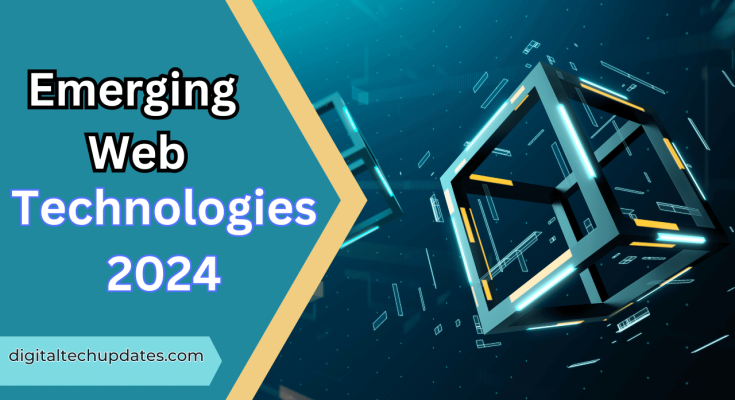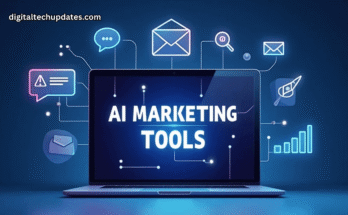As we move into 2024, the world of web technology continues to evolve at a rapid pace. From advancements in AI and machine learning to new frameworks and tools, the web development landscape is transforming. Staying ahead of these trends can help businesses and developers harness the latest innovations to create better, more efficient, and engaging web experiences. In this article, we’ll explore the hottest emerging web technologies for 2024 and how they can benefit you.
1. Artificial Intelligence (AI) and Machine Learning
Artificial Intelligence (AI) and machine learning are no longer just buzzwords—they’re becoming integral parts of web development. In 2024, AI technologies are set to become even more sophisticated, offering advanced capabilities for personalizing user experiences, automating tasks, and enhancing decision-making processes. For instance, AI-powered chatbots can provide real-time customer support, while machine learning algorithms can analyze user behavior to deliver personalized content.
Benefits:
- Enhanced User Experience: AI can create dynamic and personalized content, improving user engagement and satisfaction.
- Automation: Automate routine tasks like content moderation and customer service, saving time and reducing operational costs.
- Data Analysis: Use machine learning to gain deeper insights from user data, helping to optimize strategies and improve decision-making.
2. WebAssembly (Wasm)
WebAssembly, or Wasm, is a binary instruction format that allows code written in multiple programming languages to run on the web. It offers near-native performance and is designed to be fast, efficient, and secure. In 2024, WebAssembly is gaining traction for building high-performance web applications, including games, video editing tools, and complex simulations.
Benefits:
- High Performance: WebAssembly enables applications to run at near-native speed, making it ideal for performance-critical applications.
- Cross-Platform Compatibility: It works seamlessly across different browsers and platforms.
- Language Flexibility: Developers can write code in languages like C, C++, and Rust and run it on the web.
3. Progressive Web Apps (PWAs)
Progressive Web Apps (PWAs) are web applications that offer a native app-like experience while being accessible through a web browser. They combine the best of both web and mobile applications, providing offline capabilities, push notifications, and fast loading times. PWAs are expected to become even more popular in 2024 due to their ability to deliver a seamless user experience across different devices.
Benefits:
- Offline Access: PWAs can work offline or in low-network conditions, enhancing user accessibility.
- Engagement: Push notifications help keep users engaged and informed.
- Improved Performance: PWAs are optimized for fast loading and smooth interactions.
4. Serverless Computing
Serverless computing allows developers to build and run applications without managing server infrastructure. It abstracts the server management and automatically scales to handle traffic, which can significantly reduce operational costs and complexity. In 2024, serverless computing is becoming more mainstream, with major cloud providers offering robust serverless solutions.
Benefits:
- Cost Efficiency: Pay only for the compute time used, reducing costs associated with idle server resources.
- Scalability: Automatically scales applications based on demand, handling large volumes of traffic seamlessly.
- Reduced Complexity: Focus on writing code rather than managing infrastructure.
5. 5G Technology
5G technology promises significantly faster internet speeds, lower latency, and increased connectivity. For web developers, 5G opens up new possibilities for creating high-performance applications and delivering real-time experiences. Whether it’s for streaming high-definition video, supporting IoT devices, or enhancing mobile applications, 5G is set to revolutionize web technology in 2024.
Benefits:
- Faster Speeds: Enhanced internet speeds for smoother and more responsive web applications.
- Low Latency: Reduced latency for real-time applications and interactive experiences.
- Increased Connectivity: Improved support for a large number of connected devices and sensors.
6. API-First Development
The API-first development approach emphasizes designing and building APIs before the application itself. This method ensures that APIs are robust, scalable, and well-documented, which can lead to more consistent and reliable integrations. As web applications become more interconnected, the API-first approach is gaining momentum in 2024.
Benefits:
- Better Integration: APIs are designed to be consistent and compatible with various systems and services.
- Improved Developer Experience: Well-documented APIs make it easier for developers to integrate and use them.
- Scalability: APIs are built with scalability in mind, supporting future growth and integration needs.
7. Headless CMS
Headless CMS (Content Management Systems) decouples the content management backend from the frontend presentation layer. This allows developers to use any technology stack to build the front end while managing content in a centralized system. In 2024, headless CMS solutions are becoming increasingly popular for their flexibility and scalability.
Benefits:
- Flexibility: Choose any frontend technology to present content, providing greater design freedom.
- Scalability: Manage content across multiple platforms and devices from a single backend.
- Speed: Faster development and deployment due to separation of content management and presentation.
Conclusion
As web technologies continue to advance, staying informed about the latest trends is crucial for developers and businesses alike. The emerging technologies of 2024, such as AI, WebAssembly, PWAs, serverless computing, 5G, API-first development, and headless CMS, offer exciting opportunities to enhance web experiences and streamline development processes. By leveraging these technologies, you can stay ahead of the curve and deliver innovative solutions in the ever-evolving digital landscape.




